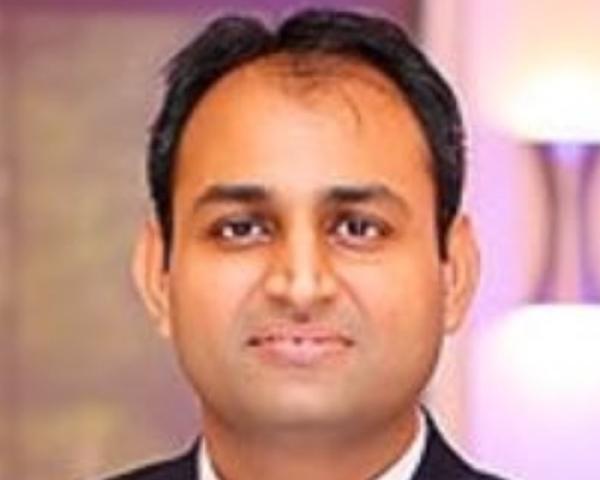Surprise billing, also known as balance billing, is a controversial practice in healthcare where a patient receives a bill from a healthcare provider that was not previously disclosed or expected. This usually happens when the patient receives care from an out-of-network provider, not covered or fully covered by their health insurance.
Even if a patient goes to an in-network hospital, they may be treated by an out-of-network doctor, specialist or subcontractor without their knowledge. Later, they receive an unexpected bill, which can be substantially higher than the usual cost.
This practice has garnered significant backlash because it places a heavy financial burden on patients. Some states in the U.S. have legislation to prevent or limit surprise billing, and proposed federal regulations also aim to address this issue nationally. Providing transparent pricing and improving networks could also help prevent surprise billing and protect patients from unexpected medical costs.
Surprise billing represents a significant issue in the healthcare system that necessitates urgent attention and resolution for several reasons:
- Impact on Financial Stability: Surprise bills can threaten a patient's financial stability. They are an unexpected burden on the patient, who might already be dealing with health-related issues.
- Insurance Coverage Discrepancies: Even when patients are diligent about using in-network providers, they can still receive out-of-network care unknowingly, particularly in emergencies or when an out-of-network specialist is called in. Despite having insurance, patients can end up bearing heavy, additional costs.
- Lack of Transparency: The healthcare sector is often criticized for its lack of price transparency. Patients are rarely made aware of the cost of care beforehand. High healthcare costs combined with this lack of transparency can discourage patients from seeking necessary treatment in a timely manner.
- Damage to Patient-Physician Trust: Surprise billing can lead to mistrust in the relationship between patients and healthcare providers.
- Risk of Medical Debt: Surprise bills are a leading cause of medical debt, which is a major issue within the U.S. healthcare system. Medical debt may lead to bankruptcy.
Regulatory and technological solutions, like data science and analytical models, can contribute significantly toward a resolution on surprise billing.
See also: Data Science Is Transforming Public Health
The Power of Data Science in Healthcare
The ability of data science to analyze vast amounts of data has revolutionized many industries, including healthcare:
- Prediction and Diagnosis: Data science aids in predicting diseases by analyzing patient data, medical records, and other factors such as lifestyle habits, genetic information and environmental factors. Predictive algorithms can help identify individuals at risk of developing specific diseases, allowing early intervention or preventive measures. Similarly, machine learning algorithms are being used for diagnostic purposes, such as figuring out patterns in MRIs, X-rays and other medical images.
- Patient Care: Real-time monitoring and electronic health records (EHR) can be analyzed to provide personalized care to a patient. Predictive analytics can also help identify patients at high risk of serious complications and enable proactive care.
- Billing Management: Data Science can significantly streamline billing management by flagging billing errors, reducing fraudulent claims, predicting claim approval probabilities and taking necessary measures to prevent surprise billing.
- Healthcare Operations: Data science is also used to optimize healthcare processes and operations. It can help hospitals and clinics to forecast patient influx, manage resources, plan staff rotations, and reduce patient waiting time, resulting in increased efficiency of healthcare delivery.
- Drug Discovery: Data science also plays an integral role in the pharmaceutical industry. It helps in accelerating drug discovery, personalizing treatments and predicting drug responses based on the data generated from genomics and proteomics.
By harnessing the power and potential of data science, the healthcare industry can make significant strides toward improving patient care and delivery and revolutionizing healthcare operations.
Integration of Predictive Analysis and Surprise Billing
In healthcare, predictive analytics can serve as a powerful tool to forecast scenarios that may cause surprise billing, thus enabling action to prevent undue fiscal stress on patients.
Predicting Out-of-Network Scenarios: Predictive analytics can help identify potential out-of-network scenarios. By analyzing insurance data and healthcare provider networks, machine learning algorithms can predict whether a healthcare provider falls within a patient's network. Prior information on whether a provider is in or out of network can avoid instances of surprise billing.
Cost Prediction for Procedures: Data from a patient's medical history and other demographic details can be analyzed to predict the possible cost of a healthcare procedure. Predictive models can be trained on historical data, encompassing variables such as age, past medical conditions, severity of the current condition, localit, and insurance coverage, to provide an estimate of the potential cost. This helps patients make informed choices about their treatments, mitigating the likelihood of surprise bills.
Risk Factor Analysis: Predictive analytics can also scrutinize patient data to identify patterns and correlations between various risk factors and healthcare costs. It can help highlight aspects of a patient’s medical history or lifestyle that may lead to costly medical treatment.
Real-Time Predictive Analysis: Real-time analysis can be employed to alert an individual in the event of a potential surprise billing situation. For instance, by analyzing real-time healthcare data and insurance details, the system can alert individuals about potential out-of-network providers or services that are not covered by their insurance plan.
While data science can provide a method to predict and avoid surprise billing scenarios, the key lies in using these techniques proactively and ensuring they are integrated into the current healthcare system. Accurate prediction models, timely alerts and easy access to a patient's complete healthcare information might serve as crucial steps in our journey toward combating the issue of surprise billing.
See also: Maximizing AI's Impact in Group Insurance
Cost Estimation Models and Their Importance
Advanced machine learning algorithms can develop dependable cost estimation models, enabling patients to make informed decisions regarding their health.
The process unfolds in several stages:
- Data Gathering: This is the first step, where relevant information is collected from diversified sources like patient health records, hospital records, insurance details, demographic data and even health indicators from wearable devices.
- Model Training: Once the data are gathered, machine learning models are trained by feeding them these data. The models learn from various inputs (age, disease type, comorbidities, demographics, etc.) and their corresponding output (cost).
- Model Testing and Validation: The trained model is then tested against a separate dataset to assess its accuracy. It's essential to validate the model's predictions against actual costs to ensure its reliability.
- Deployment and Prediction: Once the model passes the testing and validation phase, it's deployed in a real-world setting. When a patient's information is fed into this model, it can predict the probable cost of their healthcare procedure.
The use of machine learning algorithms in generating reliable cost predictions offers several crucial benefits to patients:
Enhanced Transparency: By predicting the estimated cost of a medical procedure or treatment beforehand, these models bring about transparency in the healthcare billing process. They empower patients to comprehend the expenses they are likely to incur, reducing instances of surprise billing.
Informed Decision-Making: By offering insights into probable procedure costs, these models enable patients to compare options and make informed decisions about their care. In cases where multiple treatment paths are available, cost prediction models can help patients and healthcare providers choose the most cost-effective one.
Trust Building: When patients are informed up front about the potential costs associated with their care, they may enter their treatment journey with more confidence and trust in the healthcare system.
Integrating data science and machine learning in healthcare can revolutionize the way patients navigate their treatment journey, fostering a system where hidden costs are minimized, and transparency is maximized. By anticipating and addressing financial concerns upfront, these sophisticated models contribute to alleviating the stress and anxiety often associated with medical billing.
Leveraging Data Science for Eligibility Verification
Data science and machine learning techniques play a pivotal role in automating eligibility verification processes in healthcare, ensuring services are covered under a patient's insurance policy before those services are used.
The process typically involves the following steps:
- Data Integration and Sharing: Data from insurers, healthcare providers and patients are consolidated into a unified system. This includes patient insurance information, policy coverage details and healthcare provider prices and services.
- Automated Insurance Verification: Once this data is integrated, machine learning algorithms are then leveraged to automatically verify a patient’s insurance coverage. Each time a patient schedules an appointment, the system refers to the consolidated insurance data to determine if the patient is insured and has enough coverage for the services required, and determines what the out-of-pocket cost would be. In real time, the system can provide information about the insurance validity, policy details, covered benefits, co-payment and deductibles.
- Communication: The system can automatically generate alerts for healthcare providers when it identifies potential issues with insurance coverage for a particular service. Similarly, it can provide patients with upfront cost estimates, potential out-of-pocket expenses and flagged services that are not covered by their insurance.
- Continuous Learning and Adaptation: Using advanced machine learning algorithms, these systems can continue to learn and adapt to changes in insurance plans, adjustments in healthcare services costs, changes in patient's insurance status and other factors. This ensures the system remains up-to-date and accurate.
This automation improves business operations for healthcare providers by reducing time spent on manual insurance verification, reducing claim denials and improving cash flow. For patients, it improves their overall healthcare experience by providing transparency on cost and coverage, avoiding unexpected bills and speeding the service scheduling process.
In essence, data science helps create an efficient, automated eligibility verification process that benefits both healthcare providers and patients. By using this technology, insurance eligibility and coverage details can be quickly confirmed, reducing the potential for surprise billing situations and ensuring a smoother healthcare journey for all involved.
See also: How Data & AI Can Shape Group Benefits
Contract Management using Data Science
Data science plays an instrumental role in evaluating contracts between healthcare providers and insurance companies. Effective use of predictive analytics can help identify inconsistencies that often lead to surprise billing situations.
Contract Analysis: Data science algorithms can analyze the terms of contracts between healthcare providers and insurance companies. This analysis can identify services that have limited coverage or are excluded altogether, thus helping to interpret the convoluted insurance contracts and clarify coverage for different services.
Predictive Modeling: Predictive analytics can be used to simulate potential patient scenarios against the terms of existing contracts. These simulations can detect instances where a patient’s necessary treatment might fall outside the purview of the insurance coverage, preemptively identifying situations where surprise billing may occur.
Risk Scoring: Machine learning techniques can assign risk scores to various healthcare services based on factors such as price, possibility of the service not being covered, etc. High-risk services could then be flagged in the system and trigger alerts to healthcare providers and patients about potential out-of-pocket costs or surprise billing.
Continual Reassessment: Given that provider contracts and insurance policies may change, data science techniques can be used to routinely evaluate new contracts and terms to ensure that the system remains up-to-date, automatically surfacing potential risks of discrepancy.
Automated Alerts: Employing real-time analytics, automated alerts can be triggered to notify healthcare providers and patients when a proposed treatment or service falls within a risk parameter for being out-of-network or not fully covered by the insurance.
By leveraging data science, healthcare stakeholders can gain an improved understanding of complicated contracts, enabling them to forecast and mitigate potential issues like surprise billing. This results in better alignment between provider and insurer, cost and coverage transparency for patients and overall prevention of unexpected medical costs.
Real-Time Alerts Through Data Analytics
Analytic and predictive systems are significant assets in the healthcare industry both for patients and for providers. They can provide real-time alerts for potential out-of-network scenarios or instances where services are not covered within a patient's insurance policy.
Real-Time Alerts for Out-of-Network Scenarios: An analytic system can use machine learning and artificial intelligence to continuously scan a patient's insurance information and a healthcare provider's network details. If a patient tries to schedule an appointment with a provider that is out-of-network, the system immediately triggers a real-time alert informing the patient about the situation before treatment is provided. This is particularly beneficial during emergency or specialist visits, where the status of the healthcare provider might not be immediately known.
Real-Time Alerts for Non-Covered Services: Machine learning algorithms can examine a patient's insurance policy to determine the coverage details for various services and procedures. Then, when a service or procedure not covered under the insurance policy is considered, the system sends a real-time alert to both the provider and the patient about the potential coverage gap. This allows patients to make informed decisions before moving forward with any treatment and helps providers enhance their service by informing patients about uncovered services.
Automated Regular Checks: Regular checks can be conducted with real-time updated information about changes in insurance policies, in-network provider lists and lists of covered services. Automated alerts can be sent out if there are any changes that may affect a patient's coverage.
Customized Patient Care: Based on the patient's individual’s insurance coverage, the system can provide personalized care options to patients to avoid unnecessary out-of-pocket expenditures. It can help in planning the health journey of the patient meticulously.
Challenges in Implementing Data Science for Surprise Billing
While data science presents promising solutions to curb surprise billing, practical implementation can encounter several challenges:
- Data Privacy and Security: Handling sensitive healthcare and insurance data poses significant privacy and security concerns. Strict regulations for data handling should be met, and substantial resources are required to ensure that patient data is secure and privacy is not compromised.
- Data Quality and Compatibility: Effective data analysis requires quality data. Inconsistencies, errors, outdated information or missing data can hurt the performance of predictive models. Furthermore, given that data is sourced from different entities like healthcare providers and insurance companies, compatibility can also be a challenge.
- Technical Expertise: Effective implementation of predictive analytics and machine learning requires a high level of technical expertise to build, maintain and improve models. The lack of skilled professionals can be a potential hurdle.
- Scalability and Adaptability: Scalability can be a challenge as implementing predictive models across vast and diverse healthcare systems can be complex. The models must also be adaptable, given the dynamic nature of healthcare policies, procedures and treatments.
- Regulatory Challenges: The healthcare sector is heavily regulated, and any changes or implementation of new systems would need to comply with a myriad of guidelines. Regulation often prolongs the implementation process, making it complex and challenging.
- Acceptance and Trust: For the system to work optimally, it requires acceptance and trust from all stakeholders: patients, healthcare providers, insurers and regulatory bodies. Any resistance to change or skepticism about the output of the models can limit the effectiveness of these solutions.
Despite these challenges, the move toward a data-driven approach in healthcare is inevitable and much needed. With careful planning, stringent data security measures, continuous model refinement and transparent communication with all stakeholders, data science can be used to tackle surprise billing and drive innovations across the healthcare industry.
The Future of Surprise Billing
Advancements in both regulation and technology have the potential to significantly improve the current state of healthcare, particularly in terms of addressing the issue of surprise billing. Below are some prospective developments that may bring about positive changes:
Regulatory Advancements:
- Enhanced Transparency Laws: Regulations might be strengthened to enforce greater transparency in healthcare pricing. Providers could be mandated to disclose prices in advance for all procedures and treatments. Consequently, patients would be better equipped to anticipate healthcare expenses.
- Fixing Liability for Surprise Bills: Policies might be put in place where healthcare providers are made responsible for any extra charges if they did not inform patients about potential out-of-network care.
- Standardizing Healthcare Pricing: Though a complex issue, regulators might consider some form of price standardization across healthcare providers, making it easier for patients to compare prices and make informed choices.
Technological Advancements:
- Advanced AI: As AI continues to evolve, its application in predicting potential surprise billing situations is expected to become more reliable and accurate.
- Blockchain in Healthcare: Blockchain technology can be leveraged to create a decentralized and secure system of medical records. This could facilitate real-time updates, ensure data integrity and make eligibility verification systems more efficient.
- Telemedicine: The growth of telemedicine is expected to continue, giving patients the ability to seek healthcare without geographical boundaries. However, its integration in insurance networks would have to be streamlined to prevent surprise billing.
- Interoperability: The drive toward achieving interoperability, where systems and devices can exchange and interpret data, would create more integrated and efficient healthcare ecosystems, reducing administration errors that can lead to surprise billing.
With these potential advancements, the aim is to foster a healthcare environment where pricing is transparent, billing mistake instances are minimized and patients can make informed decisions regarding their health without worrying about unanticipated expenses.
See also: How Gen AI Changes Everything in 2024
Conclusion
Surprise billing serves as an unnecessary stressor within an already complex healthcare system, placing an undue financial burden on patients and impairing trust among patients, healthcare providers and insurance companies. It is, therefore, crucial for healthcare industry leaders, regulators and various stakeholders to collaborate closely to address this pervasive issue.
Continual enhancements in policies are a prerequisite to keep up with the dynamic nature of the healthcare industry. Regulatory bodies need to devise and implement robust laws that mandate price transparency and protect patients from unforeseen medical charges. It's equally crucial that these laws adapt as healthcare practices change and challenges emerge.
Increasing transparency is another crucial aspect. Patients need clear, upfront information about potential costs associated with their care. The more transparency there is in pricing and billing, the more educated decisions patients can make, potentially reducing the prevalence of surprise billing.
Lastly, the effective management of healthcare data is of paramount importance. In an era where large swathes of data are generated every moment, we need to lean on the technologies like data science and AI to make sense of it all. Harnessing and interpreting this data effectively can lead to alerts, better decision-making and ultimately the elimination of surprise billing.
The journey of eradicating surprise billing is complex yet achievable. It requires the collective effort of all stakeholders in the healthcare industry, updated regulations, the embrace of transparency, strategic use of technology and the effective management of data. The goal is to create a patient-centric healthcare system where high-quality care is provided without the looming worry of surprise costs, leading to better health outcomes and experiences for all patients.








